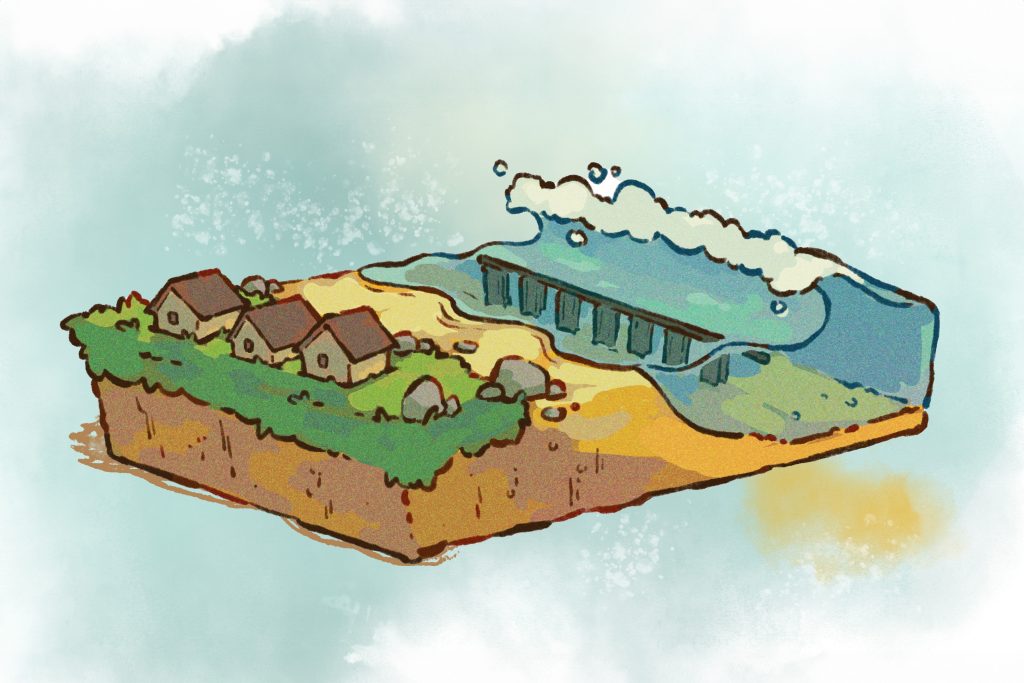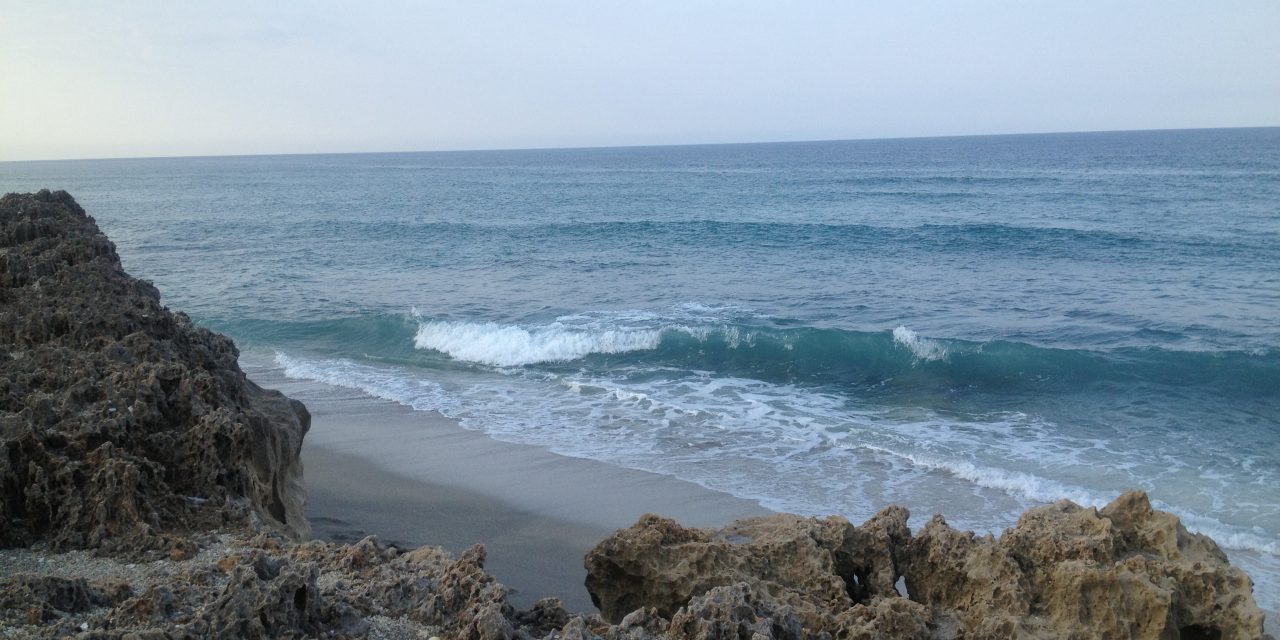New research from a Massachusetts Institute of Technology (MIT; Cambridge) team could improve on an innovative tactic to protect coastlines from climate change-driven flooding, erosion, and coral bleaching.
Artificial reefs are not a new concept. However, many of these constructed structures that aim to mimic the wave-buffering effects of natural reefs tend to require a large amount of material. MIT researchers attempted to develop a new artificial-reef design that performs on par with natural coral barriers yet remains easily deployable.
Preliminary tests conducted on small-scale models indicate that this engineered reef has the potential to diminish the energy of incoming waves by over 95%. For comparison, natural coral reefs have been shown to weaken incoming wave energy up to 97%, per the team’s study, published in the journal PNAS Nexus.
“If waves are 6 meters high coming toward this reef structure, they would be ultimately less than a meter high on the other side,” said Michael Triantafyllou, Professor in MIT’s Department of Mechanical Engineering and study co-author, in a release. “So, this kills the impact of the waves, which could prevent erosion and flooding.”
Perfecting Form and Function
The MIT team designed their “architected” reefs with two goals in mind: to effectively dissipate wave energy and provide a habitat for marine life. The design, featuring a cylindrical structure surrounded by rudder-like slats, has been found to break waves into turbulent jets, significantly reducing wave energy. It also requires 10 times fewer materials compared to existing artificial reefs, making it a small-footprint solution for coastal protection.

Each cylindrical structure features a surface of sustainable cement shaped into a pattern of “voxels,” which appear as a series of small pyramids with their vertexes flattened. Connecting these cylinders creates a long, partially permeable wall that conforms to the coastline, deployed approximately 0.8 km (0.5 mi) offshore.
This new design’s creation stemmed from an attempt to solve unrelated problems in aerospace and offshore oil industries, showing high efficiency in dissipating oil and gas flows. This led to the question of whether the same design could work for ocean waves.
Researchers experimented with the overall layout in water-flow simulations, adjusting sizes and incorporating specific components to observe the effects on waves as they interacted with each virtual design. Through this repeated trial-and-error method, they arrived at an ideal shape: a tall cylinder surrounded by four extended panels, all connected in a manner that allows water to pass through the structure. This configuration effectively disrupts incoming wave energy, redirecting some of the flow sideways instead of straight ahead.
Previously constructed artificial reefs typically consist of sunken ships, retired oil and gas platforms, and combinations of concrete, metal, tires, and stones. However, there is a lack of consistency and no standard for engineering in these types of artificial reefs.
Finalizing the Concept
After discovering the best wave-dissipating design, the scientists created a small-scale model of an artificial reef using cylindrical structures that were 3D-printed from plastic. Each cylinder was approximately 0.3 m (1 ft) in width and 1.2 m (4 ft) in height. These cylinders were arranged with a 0.3-m (1-ft) gap between them to create a fence-like barrier, which was placed in a wave tank. Researchers produced waves of different sizes, measuring their energy both before and after they interacted with the artificial reef.
“We saw the waves reduce substantially as the reef destroyed their energy,” Triantafyllou said.
However, the team wanted to enhance the permeability of the structures and create a fish-friendly environment. This is why instead of constructing each structure with a solid plastic slab, they used a sustainable form of cement.
Experimentation identified an optimal arrangement of voxels — similar to stacked egg cartons — for shaping cement into reefs, allowing for the formation of spaces where fish could live.
The team currently is working to enhance the design so that it can be made modular, scalable to any size, and convenient to transport and install in different offshore sites. In the future, the team aims to collaborate with beach towns in Massachusetts to conduct pilot-scale tests on the structures.
“These test structures would not be small,” Triantafyllou said. “They would be about a mile long, and about five meters tall, and would cost something like USD $6,000,000 per mile. So, it’s not cheap. But it could prevent billions of dollars in storm damage. And with climate change, protecting the coasts will become a big issue.”
Top image courtesy of Sherri Spears/Pixabay

ABOUT THE AUTHOR
Michelle Kuester is a staff member of the Water Environment Federation, where she serves as Associate Editor of Stormwater Report and Water Environment & Technology magazine. She can be reached at mkuester@wef.org.







